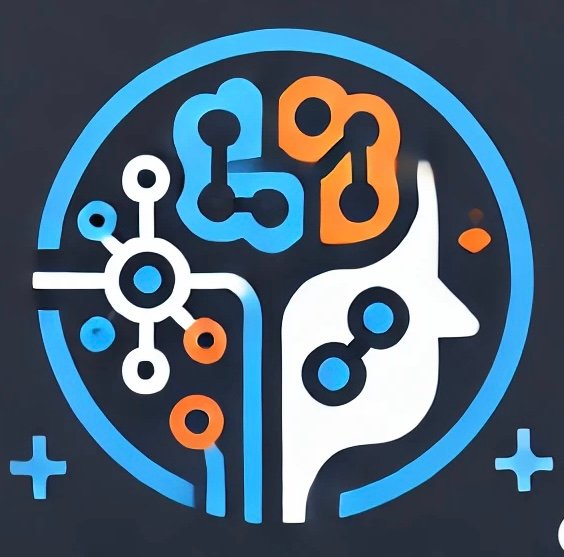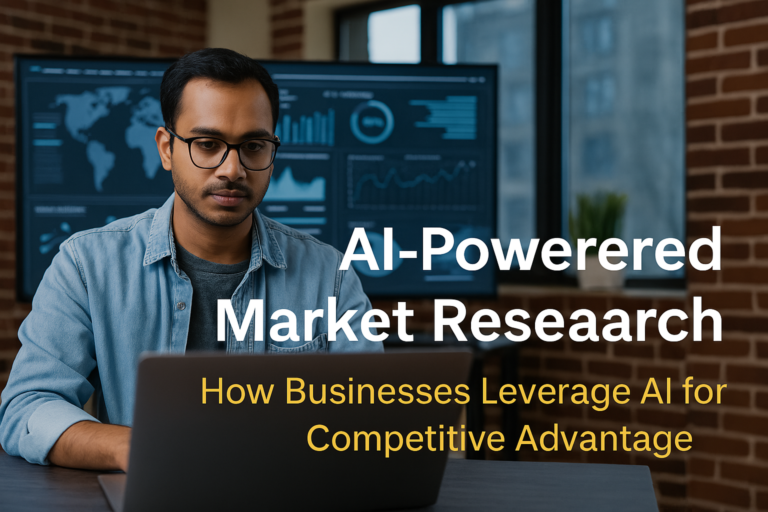
Introduction
Imagine walking into an office where AI assistants schedule your meetings, analyze complex data in seconds, and even help write your reports. This isn’t science fiction – it’s the workplace of 2025. Artificial Intelligence isn’t just knocking at our door; it’s already transformed how we work, creating waves of change across every industry from healthcare to manufacturing.
The AI job market disruption is reshaping careers faster than ever before. According to the World Economic Forum’s Future of Jobs Report, AI and automation are expected to transform more than 85 million jobs globally by 2025. But here’s the exciting part: they’re also projected to create 97 million new roles.
In this comprehensive guide, you’ll learn:
* How AI is changing different industries and job roles
* What skills do you need to stay competitive in an AI-driven job market
* Real strategies for adapting to and thriving in this transformation
* Expert insights on navigating the future of work
Table of Contents
Background & Importance
Understanding AI Job Market Disruption
AI job market disruption refers to the fundamental changes in how work is performed, distributed, and valued due to artificial intelligence technologies. Think of it like the Industrial Revolution of our time – except it’s happening much faster and affecting knowledge workers as much as manual labourers.
Recent research from McKinsey shows that:
* 75% of companies plan to increase their AI investments by 2025
* 40% of current job tasks could be automated using existing AI technologies
* Organizations implementing AI report 20-30% improvement in productivity
The Human-AI Partnership
The relationship between AI and human workers is evolving into a collaborative partnership. Take ChatGPT, for example. Instead of replacing writers and content creators, it’s becoming a powerful tool that enhances their creativity and productivity. Lawyers use it for initial contract review, letting them focus on complex legal strategies. Doctors employ AI for preliminary diagnoses, allowing more time for patient care.
Key Benefits & Challenges
Top Benefits of AI in the Job Market
1. Increased Productivity & Efficiency
Companies implementing AI solutions are seeing remarkable productivity gains. For instance:
* Salesforce’s Einstein AI helps sales teams increase leads by 50%
* JP Morgan’s COIN (Contract Intelligence) software reviews commercial loan agreements in seconds instead of 360,000 hours of lawyer time annually
* Amazon’s warehouse robots work alongside humans, increasing fulfilment speed by 20-25%
2. Creation of New AI-Related Job Roles
The AI revolution is creating entirely new career paths:
* AI Ethics Officer
* Machine Learning Engineer
* AI Training Data Specialist
* Human-AI Interaction Designer
* AI Implementation Consultant
3. Enhanced Workplace Safety
AI is making workplaces safer through:
* Predictive maintenance systems preventing equipment failures
* Computer vision systems monitoring safety protocol compliance
* AI-powered risk assessment tools identifying potential hazards before accidents occur
4. Better Decision-Making
Organizations are leveraging AI for smarter decisions:
* Netflix saves $1 billion annually through AI-powered content recommendations
* UPS’s ORION system optimizes delivery routes, saving 100 million miles annually
* Healthcare providers use AI to improve diagnosis accuracy by up to 90%
Common Challenges & How to Overcome Them
Job Displacement & Automation Anxiety
While job displacement is a real concern, historical data shows that technological revolutions typically create more jobs than they eliminate. The key is preparation and adaptation:
* Focus on developing uniquely human skills like creativity, emotional intelligence, and complex problem-solving
* Stay informed about AI developments in your industry
* Be proactive about learning new technologies
Reskilling and Upskilling
Companies and employees are tackling this challenge head-on:
* Google’s “Grow with Google” initiative offers free AI and digital skills training
* Amazon’s $700 million “Upskilling 2025” program helps employees transition to tech roles
* Microsoft’s AI Business School provides free courses on AI strategy and implementation
Ethical Concerns in AI-Driven Hiring
Organizations are addressing AI bias and fairness through:
* Regular audits of AI hiring tools
* Diverse training data sets
* Human oversight in critical decisions
* Transparent AI decision-making processes
Real-World Use Cases & Applications
AI Adoption Across Industries
Healthcare
* Mayo Clinic uses AI for disease prediction and treatment planning
* Babylon Health’s AI chatbot conducts initial patient consultations
* Radiology departments employ AI for faster, more accurate image analysis
Finance
* Goldman Sachs automated 600 trader jobs with AI software
* Visa prevents $25 billion in fraud annually using AI
* Robo-advisors manage over $1.4 trillion in assets
Manufacturing
* Tesla’s smart factories use AI for quality control and production optimization
* Siemens’ AI-powered predictive maintenance reduces downtime by 20%
* FANUC’s robots learn from each other through connected AI systems
Success Stories: AI Workforce Transformation
Case Study: Microsoft’s AI Transformation
Microsoft’s AI at Scale initiative demonstrates how companies can successfully integrate AI:
* Retrained 90% of affected employees for new roles
* Increased productivity by 40% in AI-augmented teams
* Reduced routine task time by 60%
Case Study: Unilever’s Digital Transformation
Unilever’s AI implementation shows how traditional companies can evolve:
* Automated 70% of routine HR tasks
* Reduced hiring time by 90%
* Saved $1 billion through AI-optimized operations
Expert Insights & Thought Leadership
Industry Leaders Speak
Satya Nadella, CEO of Microsoft:
“AI is not about replacing humans, but augmenting human capability and capacity.”
Sam Altman, CEO of OpenAI:
“The key to thriving in an AI-driven economy is focusing on tasks that require human creativity, emotional intelligence, and complex decision-making.”
Government Policies & AI Workforce Development
Countries are implementing comprehensive AI strategies:
* Singapore’s AI Apprenticeship Programme
* EU’s Digital Europe Programme investing €9.2 billion in AI skills
* USA’s National AI Research Resource Task Force
Step-by-Step Guide for Adapting to AI Changes
For Employees
1. Assess Your Current Role
* Identify which aspects of your job could be automated
* List your uniquely human skills
* Document your technical skill gaps
2. Develop an AI-Ready Skill Set
* Technical Skills:
* Basic programming (Python, R)
* Data analysis
* AI/ML fundamentals
* Soft Skills:
* Critical thinking
* Complex problem-solving
* Emotional intelligence
* Creative thinking
3. Pursue Relevant Certifications
* Google’s AI Professional Certificate
* IBM AI Engineering Professional Certificate
* Microsoft’s AI-900 Fundamentals
* AWS Machine Learning Specialty
For Businesses
1. Assess AI Readiness
* Audit current processes for AI integration potential
* Evaluate workforce skills and training needs
* Review data infrastructure
2. Develop Implementation Strategy
* Start with pilot projects
* Focus on high-impact, low-risk areas
* Create clear communication plans
* Establish metrics for success
3. Balance AI and Human Workforce
* Create hybrid teams
* Implement collaborative AI tools
* Provide continuous training and support
Common Myths & Misconceptions
Myth #1 – AI Will Replace All Jobs
Reality: AI is better at augmenting human capabilities than replacing them entirely. According to MIT Technology Review, only about 10% of jobs are at risk of complete automation. The rest will be enhanced by AI.
Example: Radiologists using AI
* AI helps detect abnormalities faster
* Doctors focus on complex cases and patient care
* Overall diagnostic accuracy improves by 30%
Myth #2 – Only Tech Jobs Are Safe
Reality: Many non-tech roles are more secure because they require uniquely human skills:
* Teachers combining AI tools with emotional intelligence
* Therapists using AI for administrative tasks while focusing on patient relationships
* Artists leveraging AI for creative exploration
Myth #3 – AI is Too Expensive for Small Businesses
Reality: Affordable AI solutions are increasingly available:
* Cloud-based AI services with pay-as-you-go pricing
* Open-source AI tools and frameworks
* AI-powered productivity tools with small business pricing
Examples of affordable AI tools:
* Jasper.ai for content creation
* Zoom AI Companion for meeting management
* Grammarly Business for communication
* HubSpot’s AI tools for marketing
Future Trends & Predictions
Emerging AI Technologies
1. Generative AI Evolution
* More sophisticated language models
* AI-powered design and creation tools
* Automated code generation
2. Hybrid Intelligence Systems
* Better human-AI collaboration frameworks
* More intuitive interfaces
* Personalized AI assistants
3. Edge AI
* Faster, more efficient processing
* Enhanced privacy and security
* Real-time decision making
Future of AI-Human Collaboration
By 2030, experts predict:
* 60% of jobs will involve some form of human-AI collaboration
* New job categories focusing on AI oversight and development
* Increased emphasis on human creativity and emotional intelligence
Economic Considerations
The Global AI Economy Report projects:
* AI contribution to global GDP: $15.7 trillion by 2030
* 40% increase in labour productivity
* Creation of 97 million new AI-related jobs
Conclusion
The AI job market disruption represents both challenge and opportunity. Success in this new era requires:
* Continuous learning and adaptation
* Focus on developing uniquely human skills
* Understanding of AI capabilities and limitations
* Proactive approach to skill development
Take Action Today
1. Start your AI learning journey with free resources:
* Coursera’s AI for Everyone
* Stanford’s online AI courses
* Google’s AI training programs
2. Stay informed through reliable sources:
* AI research publications
* Industry conferences
* Professional networks
3. Experiment with AI tools in your current role:
* Try AI productivity tools
* Participate in AI projects
* Share learning with colleagues
The future of work is not about humans versus AI, but humans and AI working together. By understanding these changes and preparing accordingly, you can position yourself for success in the AI-driven job market of 2025 and beyond.
[Related Articles]




